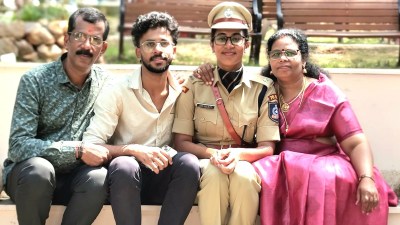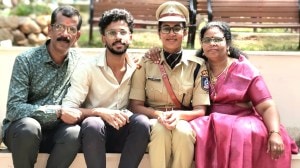Two alone, two together
There are many reasons why the BJP-led coalition has survived and it is the first non-Congress government to have lasted five years. The pri...

There are many reasons why the BJP-led coalition has survived and it is the first non-Congress government to have lasted five years. The prime minister’s liberal image is undoubtedly a glue that holds the 24-party conglomerate together. But there is another element and that is the unique relationship between A. B. Vajpayee and L.K. Advani. This is in some ways paradoxical because the tussle between the Vajpayee and Advani camps is well known, no matter how much the party dismisses it.
Advani announced last week that Vajpayee would lead the party again in the 2004 elections. Speculation had been rife that with the BJP’s return to aggressive Hindutva after Gujarat, the party would advance general elections if it wins the coming polls in the Hindi heartland and it would be Advani who’d lead the party. Vajpayee had also said some time ago that he would not be contesting the next elections.
Advani’s statement is a way of reassuring NDA allies and the BJP has also made it clear at Indore that it will focus on performance and development, not Hindutva, in the forthcoming elections. Advani has also tried to lay at rest any doubts that may have existed that he would dethrone Vajpayee, unless Vajpayee abdicates in his favour of course.
Insiders have maintained that such is the relationship between the two men that Advani, for all the conspiracy theories attributed to him, would never wrest prime ministership from Vajpayee for many reasons — seniority, the helping hand Vajpayee offered him and the years of camaraderie they had. The two once shared a flat in New Delhi, and Advani has often referred to Vajpayee’s culinary skills in making khichdi and khir and to the chaat they shared in Delhi’s Bengali Market. He was in awe of Vajpayee’s oratory, one reason why he was diffident about public speaking. Though Deendayal Upadhyaya had encouraged Advani, it was Vajpayee who had a hand in his appointment as Jan Sangh president in 1973. Infact, K.N. Govindacharya, now in the wilderness, had predicted in 1989 that if the BJP came to power, Vajpayee would be PM and Advani home minister.
It was Advani who first announced in Mumbai in 1996 that Vajpayee would be the party’s prime ministerial candidate. He said this without consulting the RSS brass or senior colleagues. Clearly, it was Vajpayee who was the vote getter and more acceptable to potential allies. Leaders often recognise the writing on the wall but few give up claim to the top job. Six years later Vajpayee recognised the time had come to appoint Advani deputy prime minister and he did. The moves for the last cabinet reshuffle were made at 30, Prithviraj Road. And now Advani realises that Vajpayee’s stewardship should continue.
Vajpayee and Advani know they need each other and it is their ability to transcend differences that has given the BJP and the coalition stability. When things have deteriorated, they talked it out like the famous lunch Vajpayee invited himself to at Advani’s home. For all their rivalry, they have mutual respect and grace in their dealings. Often it is the jockeying for power by those around them that has compounded the problem between the two.
The two leaders represent two streams within the party, as the BJP has alternated between strategies that are moderate or militant to gain ground, between the use of religion for mass mobilisation and alliances with other parties in 1967, 1977, 1989 and in 1998 and 1999, in the process taking quantum leaps.
They have differed more in approach than on fundamentals. Though both came through the same processes — Vajpayee joined the Sangh in 1939 and Advani in 1942 — one acquired a liberal image and the other was branded a hawk. From time to time Vajpayee has tried to be like Advani and Advani like Vajpayee. For all his talk at Staten Island of being a swayamsevak, or Ayodhya symbolising national sentiment, people continue to call Vajpayee the “right man in the wrong party”. No matter what Advani does to come across as a liberal, he has not been able to live down his Rath Yatri image.
The Congress had Nehru and Patel, and Gandhi often had to mediate between the two giants. Since then, Congress leaders have preferred a member of the Nehru-Gandhi family to each other. Outside the Congress, the Charan Singh-Morarji clash brought down the Janata government. Similarly, the VP Singh-Devi Lal tussle toppled the National Front ministry.
The complex Vajpayee-Advani relationship would make for a fascinating political study. There are few examples of two top leaders who have worked together so closely, whose name is taken in the same breath, one of whom has voluntarily made way for the other to be numero uno, and who have learnt to give and take in the interest of the party.
Photos



- 01
- 02
- 03
- 04
- 05



























